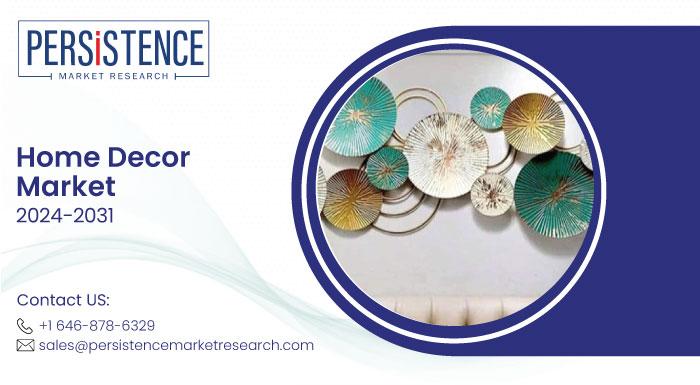Home Decor Market Trends in Eco-Friendly Products

The home decor market is experiencing a significant shift towards sustainability, as more consumers embrace eco-friendly products. With increasing awareness of environmental issues, there is a growing demand for decor items that are not only stylish but also sustainable. This trend is shaping the industry, with a focus on materials, production processes, and consumer preferences that prioritize ecological responsibility.
Read More: https://www.persistencemarketresearch.com/market-research/home-decor-market.asp
Key Trends in Eco-Friendly Home Decor
-
Sustainable Materials
One of the most prominent trends is the use of sustainable materials such as bamboo, reclaimed wood, recycled metal, and natural fibers like cotton and wool. These materials not only reduce environmental impact but also provide a unique aesthetic appeal, aligning with the modern consumer’s preference for authenticity and natural beauty. -
Upcycled and Recycled Products
Upcycling and recycling are gaining traction in the home decor industry, where old or discarded items are transformed into new, functional pieces. For example, furniture made from reclaimed wood or decor items crafted from recycled glass contribute to reducing waste and promoting a circular economy. -
Low-VOC Paints and Finishes
Volatile Organic Compounds (VOCs) in paints and finishes can be harmful to both the environment and indoor air quality. The market is seeing a rise in demand for low-VOC or zero-VOC products, which offer safer alternatives without compromising style or color choices. -
Eco-Friendly Lighting Solutions
Energy-efficient lighting, such as LED bulbs and solar-powered lamps, is becoming more common in sustainable home decor. These lighting options help reduce energy consumption while still providing stylish illumination for living spaces. -
Biodegradable and Compostable Decor Items
There is an increasing availability of biodegradable products, such as plant-based decorations, compostable rugs, and natural fiber wall hangings. These items minimize environmental impact by breaking down more easily compared to traditional materials.
Major Factors Driving the Trend
-
Consumer Awareness
With more people becoming conscious of their carbon footprint, eco-friendly decor has evolved from a niche market to a mainstream trend. Social media and influencers have also played a role in spreading awareness about sustainable lifestyle choices. -
Government Regulations and Certifications
Stringent regulations on emissions and waste management, as well as certifications like LEED (Leadership in Energy and Environmental Design), are encouraging companies to adopt sustainable practices. These certifications add value to eco-friendly products, making them more appealing to environmentally conscious buyers. -
Technological Innovations
Advancements in material science have enabled the creation of sustainable alternatives that do not compromise on quality or aesthetics. For instance, engineered materials that mimic natural textures offer durability while being made from recycled or plant-based sources.
Conclusion
The home decor market is rapidly embracing eco-friendly products as consumers prioritize sustainability in their purchasing decisions. From sustainable materials to energy-efficient solutions, the industry is innovating to meet the growing demand for environmentally responsible decor. As awareness continues to spread, eco-friendly home decor is set to become a permanent fixture in the market, influencing trends and consumer behavior for years to come.
- Art
- Causes
- Crafts
- Dance
- Drinks
- Film
- Fitness
- Food
- Games
- Gardening
- Health
- Home
- Literature
- Music
- Networking
- Other
- Party
- Religion
- Shopping
- Sports
- Theater
- Wellness


